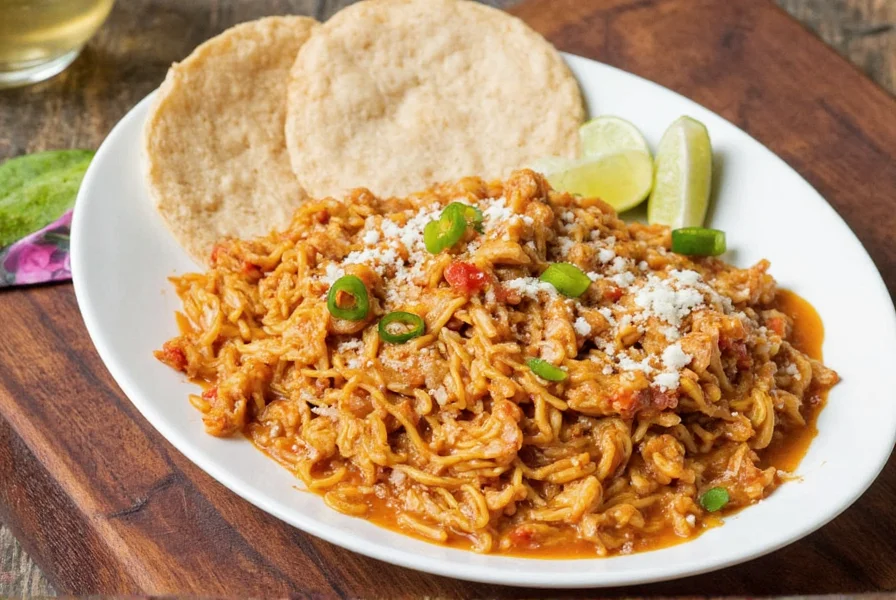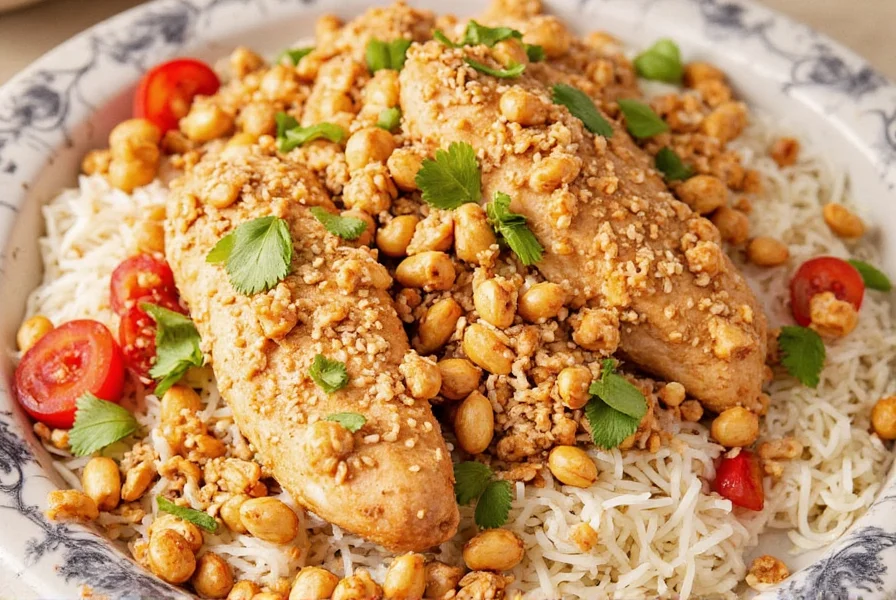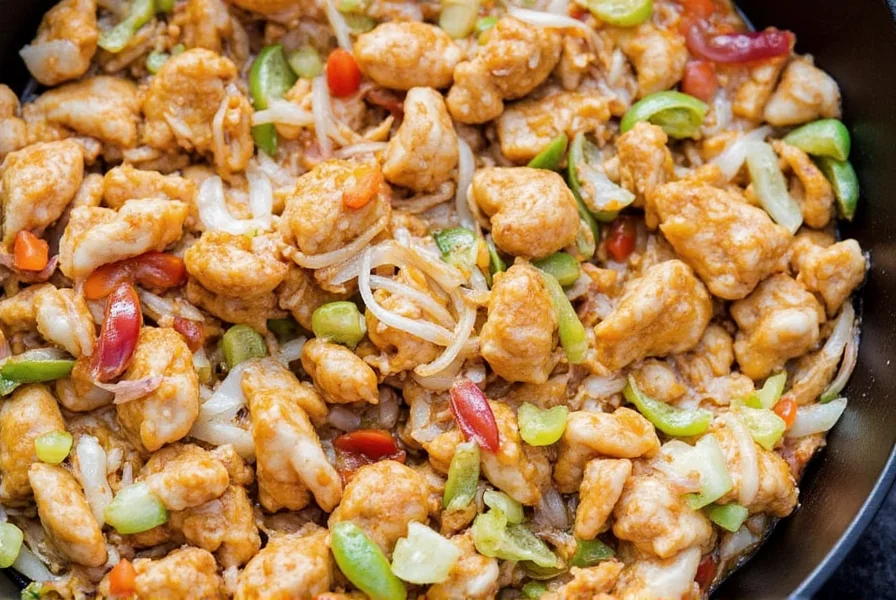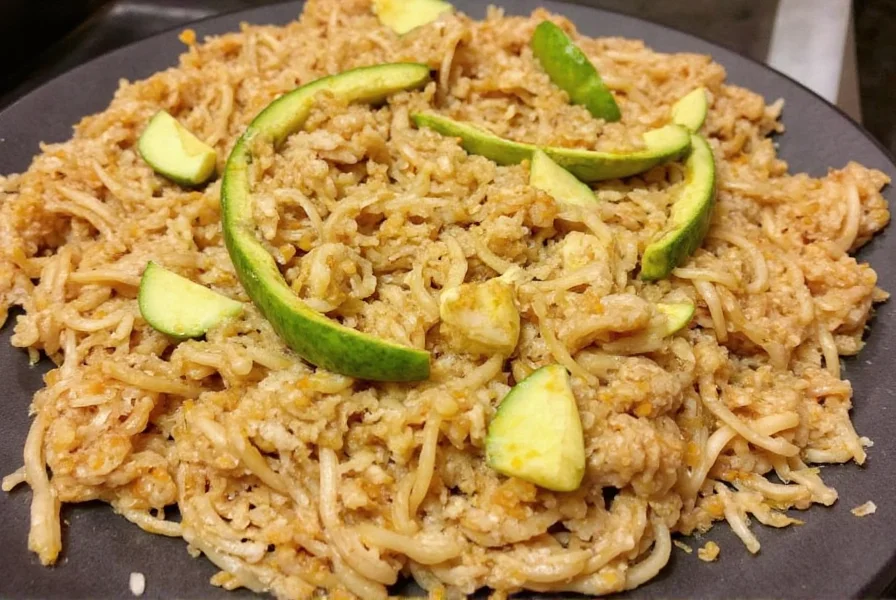How to Make Mexican Chicken Tinga: A Flavorful Journey Through Global Spice Traditions
Table of Contents
Introduction
If you're a spice enthusiast or a food lover looking to explore the vibrant world of global flavors, then Mexican chicken tinga is a must-try. This hearty, slow-cooked dish brings together the rich traditions of Mexican cuisine with the bold, complex spices that have been used for centuries across the globe. Whether you're an advanced cook or just starting out in the kitchen, this guide will walk you through how to make mexican chicken tinga with ease and confidence.
In this article, we'll dive into the history and flavor profile of chicken tinga, break down the essential ingredients, and provide a step-by-step recipe that's easy to follow. We’ll also share practical tips, a detailed buying guide, and insights into how global spice traditions influence this beloved dish. So grab your apron and let’s get started!
What Is Chicken Tinga?
Mexican chicken tinga is a traditional dish that originated in central Mexico, particularly in the state of Puebla. The word 'tinga' refers to the way the meat is cooked—slowly simmered until it becomes tender and falls apart, creating a rich, saucy texture. It's often served as a main dish or used as a filling for tacos, enchiladas, and burritos.
The key to a great chicken tinga lies in its sauce. Typically made from tomatoes, chiles, onions, garlic, and a blend of spices, the sauce is both savory and slightly smoky. What makes it unique is the use of chipotle peppers in adobo sauce, which adds a deep, smoky heat that’s unmistakably Mexican.

Essential Ingredients for Mexican Chicken Tinga
To make authentic Mexican chicken tinga, you'll need a mix of fresh vegetables, aromatic spices, and quality proteins. Here’s a breakdown of the essential ingredients:
- Chicken: Boneless, skinless chicken thighs are ideal because they stay juicy and flavorful when cooked slowly.
- Tomatoes: Fresh or canned tomatoes add a natural sweetness and acidity to the sauce.
- Chiles: Chipotle peppers in adobo are a must, but you can also use other varieties like guajillo or ancho for different levels of heat and flavor.
- Onion and Garlic: These form the base of the sauce and add depth to the dish.
- Spices: Cumin, oregano, paprika, and a pinch of cinnamon are commonly used to enhance the flavor profile.
- Olive Oil or Lard: Used for cooking the ingredients and adding richness to the sauce.
- Broth or Water: To help create the right consistency and allow the flavors to meld.
While these are the core components, feel free to experiment with additional ingredients like avocado, lime juice, or cilantro to suit your taste.
Step-by-Step Guide to Making Chicken Tinga
Now that you have all the ingredients ready, let's walk through how to make mexican chicken tinga. This recipe serves 4–6 people and takes about 1 hour to prepare and cook.
Step 1: Prepare the Chicken
Cut the chicken thighs into bite-sized pieces and set them aside. If using bone-in thighs, remove the bones before proceeding.
Step 2: Sauté the Base
Heat a large skillet or pot over medium heat. Add a bit of olive oil or lard, then sauté the chopped onion and minced garlic until softened and fragrant.
Step 3: Add the Chiles and Tomatoes
Add the chopped tomatoes and chipotle peppers (with their adobo sauce) to the pan. Cook for a few minutes to release their flavors and soften the tomatoes.
Step 4: Season and Simmer
Stir in the spices—cumin, oregano, paprika, and a pinch of cinnamon. Add the chicken pieces and pour in enough broth or water to cover everything by about an inch. Bring to a gentle simmer and let it cook for 30–40 minutes, stirring occasionally.
Step 5: Check for Doneness
The chicken should be fully cooked and tender, and the sauce should be thick and glossy. If the sauce is too thin, continue cooking on low heat to reduce it.
Step 6: Serve and Enjoy
Serve the chicken tinga warm with tortillas, rice, or beans. You can also top it with fresh cilantro, avocado, or a squeeze of lime for extra flavor.

Tips and Tricks for the Perfect Tinga
Here are some expert tips to help you master how to make mexican chicken tinga and elevate your cooking game:
- Use Fresh Tomatoes: While canned tomatoes work well, using fresh ones can give your tinga a more vibrant flavor. Just be sure to peel and seed them first.
- Adjust the Heat: The level of spiciness can be easily adjusted by changing the number of chipotle peppers or using milder chiles.
- Let It Rest: Once the chicken is cooked, let the mixture rest for 10 minutes before serving. This allows the flavors to settle and enhances the overall taste.
- Make Ahead: Tinga can be made in advance and stored in the fridge for up to 3 days or frozen for up to 3 months. It actually tastes better the next day!
- Experiment with Variations: Try adding mushrooms, potatoes, or even black beans to make it more substantial and versatile.

Buying Guide: Choosing the Right Spices and Tools
To ensure the best results when making mexican chicken tinga, it’s important to choose high-quality ingredients and tools. Below is a detailed buying guide to help you select the right products:
Spices
| Spice | Features | Best For | Target Audience |
|---|---|---|---|
| Cumin | Earthy, nutty flavor; essential in many Mexican dishes | Adding depth to the tinga sauce | Cooking enthusiasts, home chefs |
| Oregano | Strong, pungent aroma; common in Mexican cuisine | Enhancing the tomato-based sauce | Beginners, intermediate cooks |
| Paprika | Smoky, sweet, or spicy depending on the type | Adding color and warmth to the dish | Flavor seekers, spice lovers |
| Cinnamon | Subtle sweetness that balances the heat | Enhancing the complexity of the sauce | Advanced cooks, foodies |
Cooking Tools
| Tool | Features | Best For | Target Audience |
|---|---|---|---|
| Cast Iron Skillet | Durable, retains heat well, ideal for searing and simmering | Slow-cooking the tinga | Home cooks, professional chefs |
| Food Processor | Quickly blends tomatoes and chiles into a smooth sauce | Preparing the sauce base | Beginners, time-conscious cooks |
| Meat Thermometer | Ensures the chicken is cooked to the correct temperature | Checking doneness of the chicken | Health-conscious cooks, food safety advocates |
When purchasing spices, look for those that are freshly ground and packaged in airtight containers. For tools, prioritize durability and functionality to make your cooking experience more enjoyable.
Global Spice Traditions and How They Influence Tinga
Mexican chicken tinga is not just a local dish—it’s a reflection of the rich interplay between global spice traditions and regional cooking styles. The use of chiles, tomatoes, and spices in tinga has roots in indigenous Mesoamerican cuisine, but it also incorporates influences from Spanish colonization and later global trade.
For example, the addition of cumin and oregano in tinga is believed to have been influenced by the arrival of European spices during the colonial period. Similarly, the use of chipotle peppers—a smoked and dried jalapeño—shows the enduring legacy of traditional Mexican preservation methods.
This blending of flavors and techniques highlights how global spice traditions shape the culinary landscape. As you learn how to make mexican chicken tinga, you’re also engaging with a long history of cultural exchange and innovation in the world of food.

Conclusion
Learning how to make mexican chicken tinga is more than just a cooking task—it's a journey into the heart of Mexican cuisine and a celebration of global spice traditions. With the right ingredients, tools, and a little bit of practice, you can recreate this delicious dish in your own kitchen.
Whether you're a seasoned chef or a curious beginner, the process of making chicken tinga offers a chance to explore new flavors, experiment with spices, and connect with the rich culinary heritage of Mexico. So why wait? Grab your ingredients, fire up the stove, and enjoy the smoky, savory goodness of homemade chicken tinga today.











 浙公网安备
33010002000092号
浙公网安备
33010002000092号 浙B2-20120091-4
浙B2-20120091-4